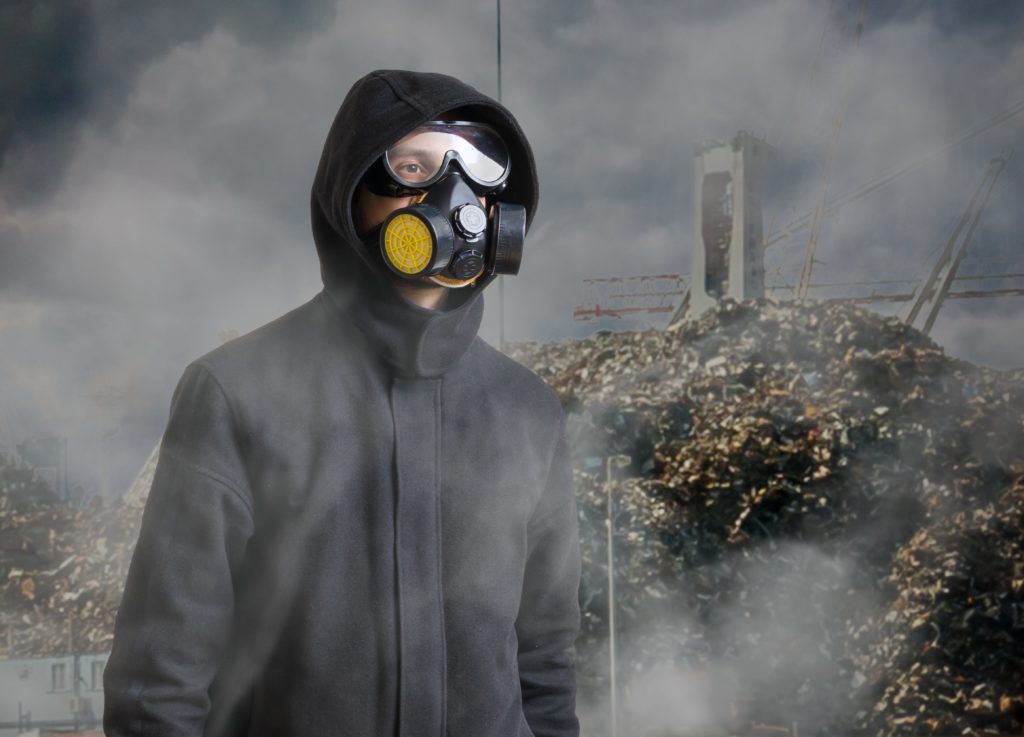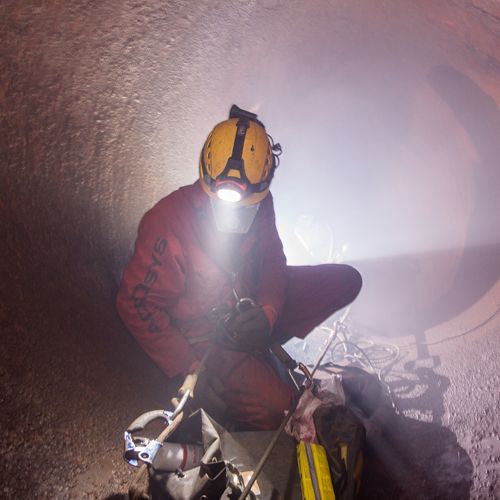Where Would Workers Encounter Hazardous Atmospheres?

Definition of Hazardous Atmosphere
Let us begin by first understanding what a hazardous atmosphere is.
A hazardous atmosphere refers to dusts, gases, vapors, fumes, and mists that may contaminate the air around us causing people to breathe in toxins or bad air resulting in poisoning the human body. Areas with low oxygen levels are also considered hazardous atmospheres as they can lead to worker injury or death.
In its Confined Spaces Standard for the construction industry, OSHA defines a hazardous atmosphere as, “an atmosphere that may expose employees to the risk of death, incapacitation, impairment of the ability to self-rescue (that is, escape unaided from a permit space), injury,” due to the presence of flammable gas, airborne combustible dust, low or high levels of oxygen in the atmosphere, or other concentrations of poisonous substances or toxic chemicals over the permissible exposure limits (PELs), or any other atmospheric condition that is immediately dangerous to life or health (IDLH). For a detailed definition, see 29 CFR 1926 Subpart AA, Section 1926.1202 - Definitions.
Such hazardous atmospheres can pose a danger to workers’ health and life. Hazardous atmospheres, if not identified at the outset, can result in worker injury, illness, incapacitation, inability to self-rescue; or incidents such as explosion and fire.
Remember! Flammable substances, a low or high oxygen atmosphere, and toxins are the most common causes of atmospheric hazards.
Causes of Atmospheric Hazards
A hazardous atmosphere can be triggered by the release of excessive toxins or poisons into the atmosphere contaminating the air. Low or depleting oxygen levels, as well as excessive oxygen in the air, can also result in hazardous atmospheres. Toxic chemicals, hazardous wastes, or other poison-emitting substances that produce toxic gases, fumes, and vapors (e.g., hydrogen sulfide) result in air contamination causing personnel to inhale toxic compounds while at the worksite and exposing workers to health hazards.
Furthermore, hazardous atmospheres may also occur due to natural reasons such as toxic fumes and combustible dusts released from volcanoes, areas widespread with hot springs emitting high levels of mercury, areas with various hazardous substances that can lead to the creation of sulfuric acid, or areas with natural deposits or high concentrations of dangerous chemical substances such as asbestos, silica, arsenic, and pyrite.

What is an oxygen-deficient atmosphere?
A work area or other space that has less than 19.5% oxygen in the atmosphere.
What is an oxygen-enriched atmosphere?
A work area or other space with an atmosphere containing over 23.5% oxygen by volume.
Where Would Workers Encounter Hazardous Atmospheres?
May jobs and occupations can expose workers to hazardous atmospheres. Let’s discuss some of these in more detail.
When Working in Confined Spaces
Hazardous atmospheres are most prevalent in confined spaces. The nature of confined spaces as identified by OSHA is one of the most dangerous areas where workers would be exposed to hazardous atmospheres. The four hazardous atmospheres encountered by workers carrying out job tasks in confined spaces are:
- Flammable Atmosphere
- Toxic Atmosphere
- Oxygen-Deficient or Oxygen-Enriched Atmosphere
- Airborne Combustible Dust Particles in the Atmosphere
For detailed information on the atmospheric hazards and other hazards encountered by workers in confined spaces read our blog on Inherent Dangers of Working in a Confined Space.

OSHA Confined Space Awareness Training course to learn more.
Hazardous Waste Operations
Employees involved in hazardous waste operations are also exposed to atmospheric hazards. Hazardous waste can generate toxic gases and vapors exposing workers to acute or chronic health effects. As such workers employed in routine hazardous waste operations in emergencies involving hazardous substance spills must understand the inherent dangers such hazardous substance spillages can cause to the atmosphere. It is also the reason why OSHA advocates for respiratory protection when workers handle hazardous materials and work in hazardous waste operations. Some of the hazardous atmospheres that workers may encounter are:
- Oxygen-deficient atmosphere
- Toxic gas releases contaminating clean air
- Combustible atmosphere
- Flammable atmosphere

OSHA 40 Hour HAZWOPER Training course to learn more.
Working in Excavations and Trenches
Excavation sites and trenching operations can often expose workers to hazardous atmospheres. As excavations and trenches are areas that are dug deep into the earth, workers may be exposed to toxic atmospheres due to the naturally occurring pockets of poisonous gases or other toxic chemicals or deposits of hazardous substances within the rock formations. These atmospheric hazards can lead to adverse respiratory illnesses and even cause workers to suffer from asphyxiation. Personnel working in excavation sites and trenches may encounter some of these hazardous atmospheres:
-
- Oxygen-deficient atmosphere
- Toxic atmospheres
- Flammable atmosphere
- Atmospheres with airborne combustible dusts

OSHA Competent Person for Excavation, Trenching, and Shoring Training course to learn more.
When Handling Chemicals or Other Hazardous Materials
Today, many industries and manufacturing operations use chemical compounds and other hazardous materials as part of their production processes. Workers employed by the oil and gas industry, chemical industry, construction industry, laboratories, manufacturers of various goods, and even testing facilities can be exposed to atmospheric hazards due to leaks or unexpected releases and mixing of toxic chemicals or other hazardous materials. For example, construction industry workers may inadvertently be exposed to asbestos and lead without their knowledge. Thus, it is imperative that whatever the organization, the work, or the job role, employees must be made aware of existing workplace hazards, especially those related to atmospheric hazards, as contaminated air may not be containable in one area and rapidly spread the toxins within enclosed places such as buildings.
Working with chemicals or other hazardous materials, enroll in a safety training course that best fits your occupation and work tasks.
Minimizing Atmospheric Hazards
Hazardous atmospheres can often be overlooked, and the dangers of atmospheric hazards are recognized only when it is too late. Thus, for the different occupational areas where workers can encounter atmospheric hazards or hazardous atmospheres, OSHA has incorporated recommended practices within the relevant OSHA regulations and standards. Employers can ensure employees are aware of such atmospheric hazards and the implication for their health and safety by enrolling them in adequate and suitable training courses. This will enable workers to practice recommended methods to increase personal safety and health while at the worksite while reducing accidents and injury rates occurring in the organization.Here are a few measures that OSHA recommends employers implement to reduce atmospheric hazards:
- Incorporating atmospheric testing within the overall workplace safety and health program.
- Inspecting excavation sites and trenches before work begins.
- Regularly testing and monitoring work areas that are prone to atmospheric hazards.
- Testing atmospheres before workers enter confined spaces.
- Making gas meters available to workers while at the job site for regular air monitoring.
- Job hazard analysis at HAZWOPER sites.
- Respiratory protection.
- Appropriate ventilation systems for confined/enclosed spaces.
- Specific control measures such as purging and inerting to minimize or remove toxic atmospheres from confined spaces.

